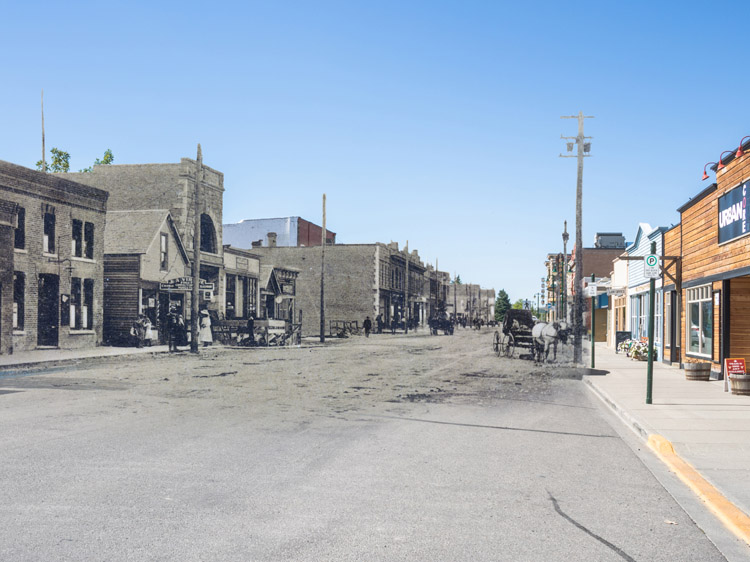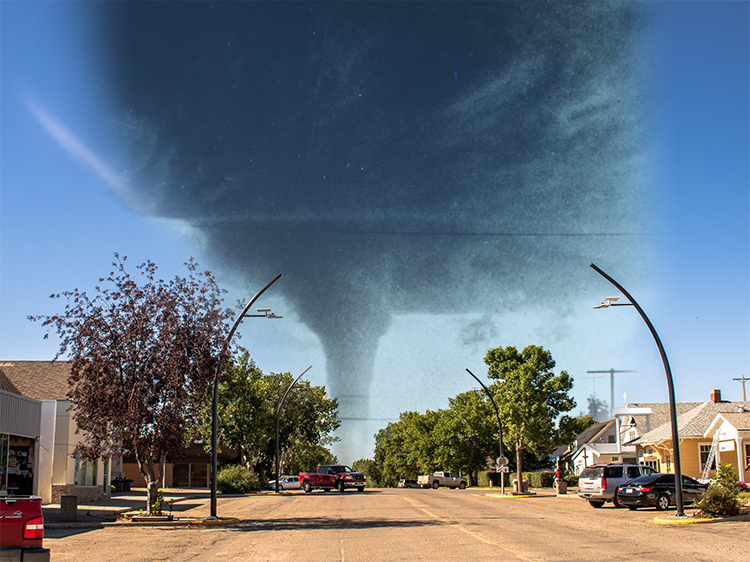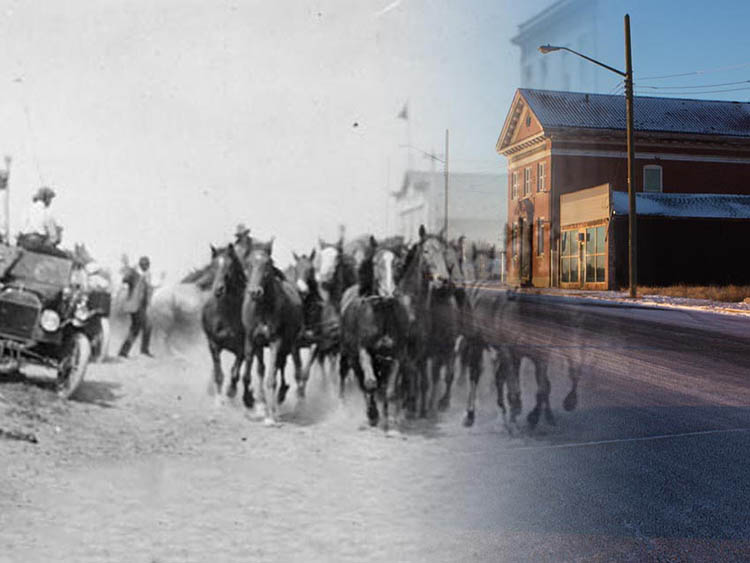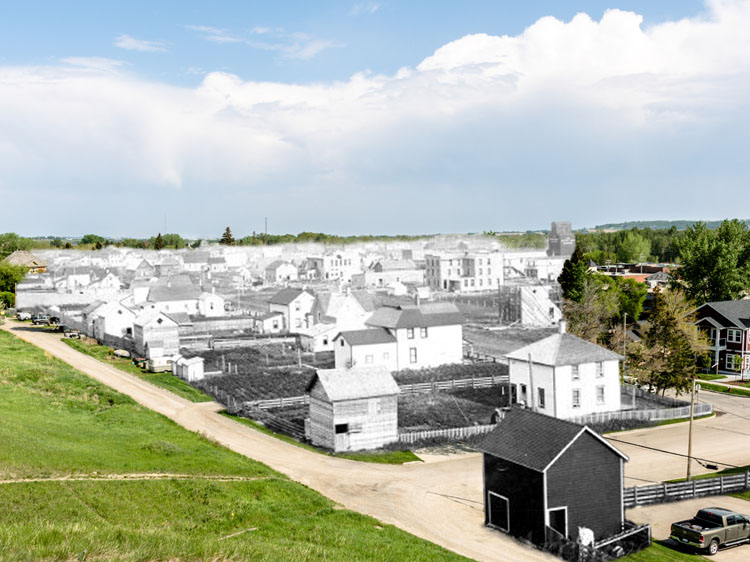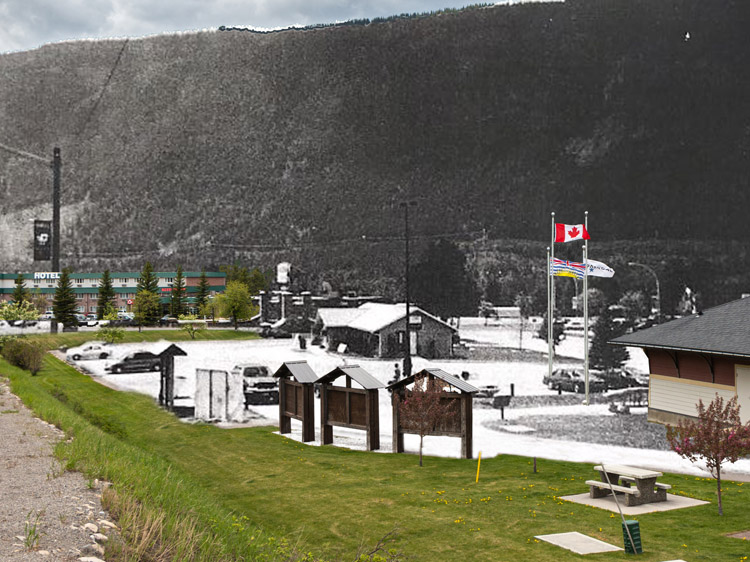Lethbridge was born in the late 1800s as a coal mining community known at the time as Coalbanks. The city is located 215 km southeast of Calgary above the steep Old Man River Valley. Before the arrival of settlers, the area was part of the summer hunting grounds of the Siksikaitsitapi (Blackfoot Confederacy) and a park in the river valley commemorates the defeat of a Cree war party by Kainai (Blood) and Piikani (Peigan) people and the Cree. The name Lethbridge was chosen early in the community's history in honour of William Lethbridge, an original shareholder in the Northwest Coal and Navigation Company - the first coal company to operate in the area. The community economy soon diversified into lumber when the Galt family, the owners of Lethbridge's first mine, developed a sawmill beneath the current location of the High Level Bridge. The community's growth skyrocketed after the Canadian Pacific Railway moved their Crowsnest line division point from Fort Macleod to Lethbridge. With the rise of agriculture in the area, the townsite moved out of the river valley onto the fertile lands of the prairie. After the Second World War, the people of Lethbridge increasingly used automobiles, allowing the city to develop further away from the city centre. Lethbridge's last coal mine closed in 1957, but the mine's tipple, water tower, and machinery buildings were left behind as a reminder of the city's coal mine origins.
We respectfully acknowledge that the city of Lethbridge is located on the traditional territory of the Siksikaitsitapi (Blackfoot Confederacy) who have shaped and cared for this land since time immemorial.
Donate Now
If you enjoyed this free content, we ask you to consider making a donation to the Canada-Ukraine Foundation, which is providing urgently needed humanitarian aid to Ukraine.
The Ukrainian people are heroically defending their homeland against a genocidal war of Russian aggression. The humanitarian situation is critical and the needs immense. 100% of all donations made through this link go directly to supporting the people of Ukraine. Recently funded initiatives by the Canada-Ukraine Foundation include demining and removal of unexploded ordnance, and the evacuation of thousands of deaf people from the warzone.
Walking Tours
Explore
Lethbridge
Then and Now Photos
Wagons on Round Street
ca. 1907
Postcard view. Carriages and wagons, centre foreground. Hotel Dallas, centre.
The Post Office
1907-1909
A postcard view of the old post office on 2nd Street.
A View Down Round Street
Feb. 5 1910
A painted advertisement is visible on the side of the buildings. The Union Bank of Canada is the closest building. People mill about on the sidewalks.
Hotel Dallas
ca. 1910
The Hotel Dallas is visible the on right of this 1910 postcard.
A French Arch
ca. 1910
An arch erected over the intersection of 5th Street South and 3rd Avenee states a greeting in French, "Bienvenue a notre Premier Ministre". The uprights were full of coal to give weight and strength, and the arch was made of baled hay.
A Busy Day on 5th Street
ca. 1907-1913
Pedestrians, cars, and streetcars share Fifth Street. The Starland Theatre stands on the right.
Starland and Streetcar
ca. 1907-1909
A postcard view of 5th Street traffic. Different kinds of vehicles shard the road such as a streetcar, horse-drawn vehicles and cars, while pedestrians weave between them. The Starland Theatre stands on the left.
The Royal Bank
ca. 1927
The Royal Bank opened May 25, 1910 in Lethbridge. The photo also shows Royal Beauty parlour and barber shop on the left.





















